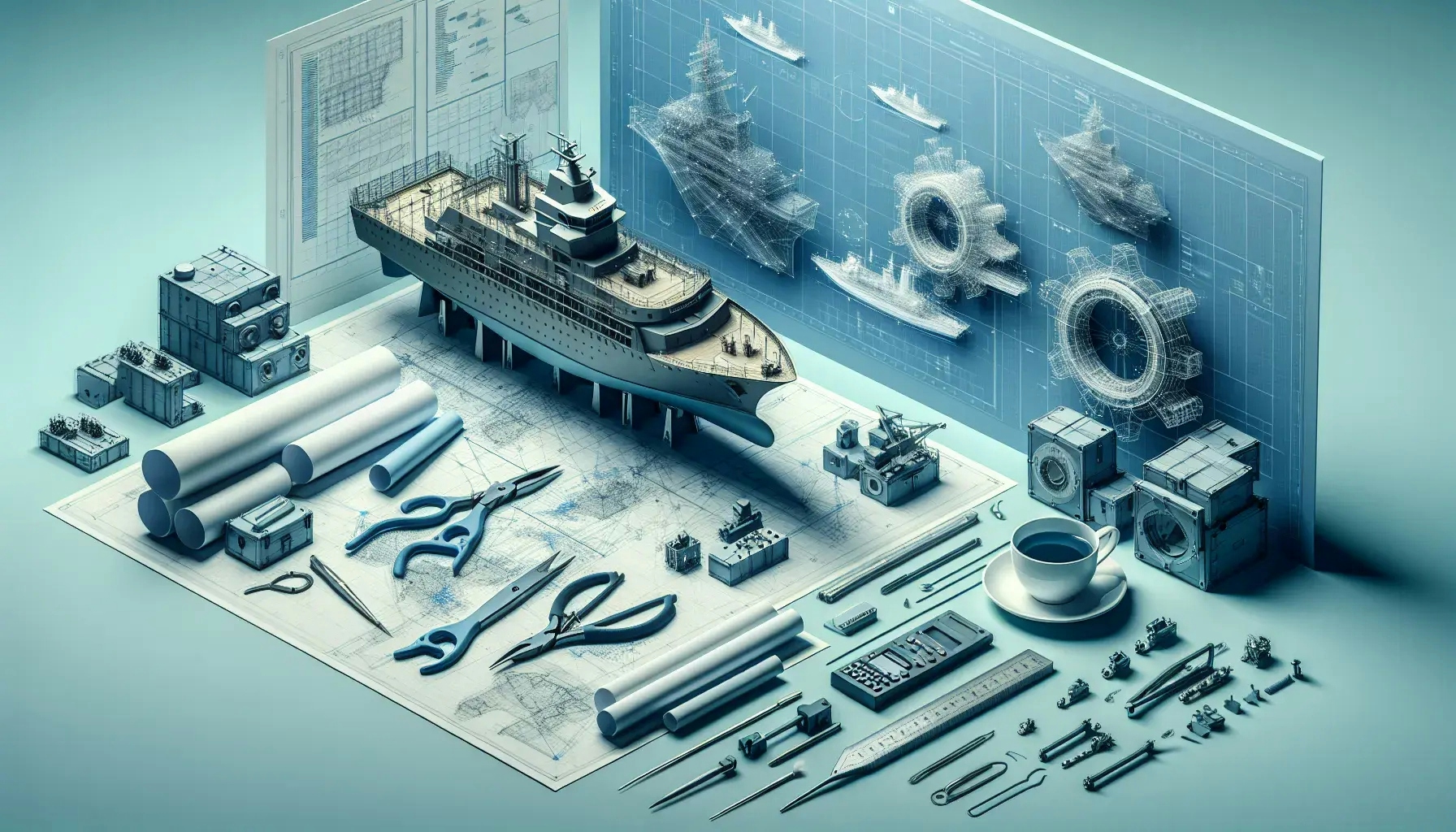In the vast and complex world of shipbuilding, contemporary challenges are as diverse as they are numerous. This blog post aims to shed light on these issues, providing a comprehensive exploration of the hurdles faced by today's shipbuilders. From environmental concerns to technological advancements, we delve into the intricate tapestry of modern shipbuilding.
Environmental Concerns and Sustainability
The shipbuilding industry, like many others, faces increasing pressure to reduce its environmental impact. This pressure comes from both regulatory bodies and a public increasingly concerned about climate change. It's not just about reducing emissions during the ship's operation, but also about minimizing the environmental footprint during the construction process.
In response to these challenges, shipbuilders are exploring various avenues. One such avenue is the use of more sustainable materials. For instance, some shipbuilders are experimenting with bio-based materials, which can reduce the carbon footprint of the construction process. However, these materials often come with their own set of challenges, such as higher costs and untested durability.
Another approach is to improve the energy efficiency of ships. This can be achieved through better design, such as optimizing the hull shape for reduced drag, or through the use of more efficient engines. Yet, these solutions also present challenges. Design improvements often require significant research and development investment, while more efficient engines can be expensive and may require new infrastructure for fueling.
Technological Advancements and Integration
The rapid pace of technological advancement presents both opportunities and challenges for the shipbuilding industry. On one hand, new technologies can improve efficiency, safety, and performance. On the other hand, integrating these technologies into ship designs can be complex and costly.
Take, for example, the rise of digital technologies. These can provide real-time data on ship performance, enabling better decision-making and potentially reducing operating costs. However, integrating these systems into ships requires significant technical expertise and can raise concerns about data security and privacy.
Similarly, advances in automation and robotics have the potential to revolutionize shipbuilding. These technologies can increase productivity, reduce labor costs, and improve safety. Yet, their implementation requires substantial investment and can lead to job losses, which can be a contentious issue.
Regulatory Compliance and Safety Standards
As the shipbuilding industry evolves, so too do the regulations that govern it. Keeping up with these changes and ensuring compliance can be a significant challenge for shipbuilders. This is particularly true when operating in international waters, where multiple regulatory frameworks may apply.
Safety standards are a key aspect of these regulations. Ships must be designed and built to withstand a variety of harsh conditions, from storms at sea to potential accidents. Ensuring that these standards are met requires rigorous testing and quality control, which can be time-consuming and expensive.
Moreover, regulations are increasingly focusing on environmental sustainability. This means that shipbuilders must not only ensure the safety and performance of their ships, but also minimize their environmental impact. This adds another layer of complexity to the shipbuilding process.
Economic Factors and Market Volatility
The shipbuilding industry is heavily influenced by economic factors and market volatility. Changes in global trade patterns, fluctuations in commodity prices, and economic downturns can all impact demand for new ships.
In periods of economic growth, demand for new ships tends to increase, driving up prices and encouraging investment in shipbuilding. However, during economic downturns, demand can fall sharply, leading to overcapacity and financial difficulties for shipbuilders.
Market volatility can also affect the cost of materials and labor, which are major components of shipbuilding costs. For example, a rise in steel prices can significantly increase the cost of building a ship. Similarly, changes in labor costs, due to factors such as wage inflation or changes in labor laws, can also impact the profitability of shipbuilding.
Workforce Challenges and Skills Gap
The shipbuilding industry faces significant workforce challenges. These include an aging workforce, a skills gap, and the need to attract and retain talent in a competitive market.
Many shipbuilders are grappling with an aging workforce, with a significant proportion of their workers nearing retirement. This is creating a knowledge gap that can be difficult to fill, as younger workers may not have the same level of experience or expertise.
At the same time, the industry is facing a skills gap. The rapid pace of technological change means that workers need to continually update their skills to keep up. However, training and development can be costly and time-consuming.
Finally, attracting and retaining talent can be a challenge in a competitive job market. Shipbuilding is a demanding industry, with long hours and often difficult working conditions. This can make it difficult to attract new workers, particularly younger ones who may be looking for more flexible or less physically demanding work.
Geopolitical Factors and Trade Policies
Geopolitical factors and trade policies can also have a significant impact on the shipbuilding industry. Changes in trade policies, such as tariffs or trade agreements, can affect the demand for ships and the cost of materials.
For example, tariffs on steel can increase the cost of shipbuilding, while trade agreements can open up new markets for shipbuilders. However, these policies can also be unpredictable and subject to change, adding an element of uncertainty to the shipbuilding process.
Geopolitical tensions can also affect the industry. For instance, conflicts or tensions in key shipping routes can disrupt trade and reduce demand for new ships. Similarly, political instability in countries that are major consumers of shipping services can also impact the industry.
Charting a Course Through Modern Shipbuilding Challenges
The challenges facing the contemporary shipbuilding industry are multifaceted and complex. They range from environmental and technological challenges to regulatory, economic, workforce, and geopolitical issues. Navigating these challenges requires a combination of innovation, adaptability, and resilience. As we move forward, it's clear that the shipbuilders who can successfully navigate these challenges will be the ones who shape the future of the industry.

